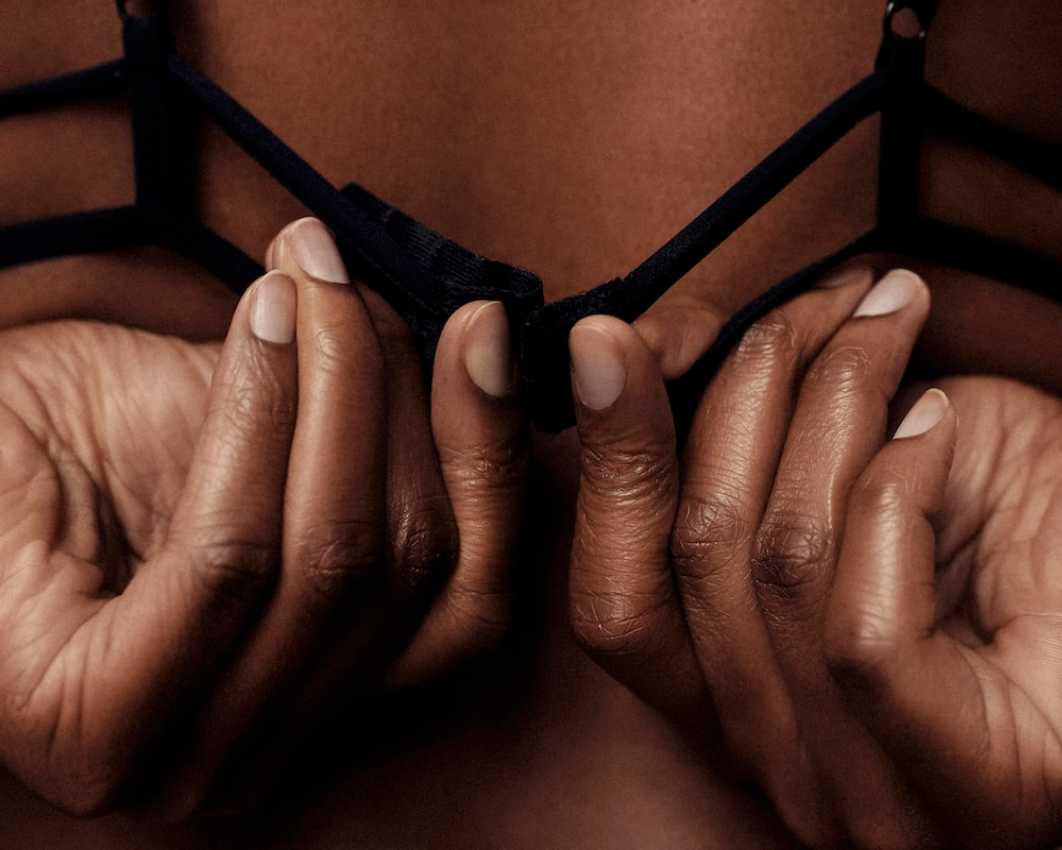Love’s intricate dance unfolds through five essential pillars, each a vibrant thread in the tapestry of a thriving partnership. Picture a canvas where trust intertwines with communication, forming a foundation as sturdy as it is beautiful. Atop this base, respect and honesty bloom like twin flowers, their petals reaching towards the sun of mutual understanding.
In this abstract landscape, compromise and growth form winding paths, leading couples through challenges and triumphs alike. Intimacy and affection add warmth to the scene, their glow softening the edges of everyday life. And weaving through it all, a strand of humor adds sparkle, reminding us that love should be as joyful as it is profound.

Curious about how to talk without putting your foot in your mouth? Let’s dive into the art of communication!
1. Communication: The Art of Talking Without Your Foot in Your Mouth
Ever felt like your words are doing the cha-cha while your brain’s still trying to find the dance floor? Welcome to the art of relationship communication, where saying what you feel without stepping on toes is the ultimate tango. It’s not just about spilling your guts; it’s about crafting a symphony of authenticity and consideration.
Picture this: you’re bursting to share your emotions, but your partner looks as receptive as a brick wall. That’s when you need to channel your inner relationship ninja. Start by creating a safe space where vulnerability isn’t just allowed; it’s celebrated. This might mean setting the mood with some candles or breaking out the emergency chocolate stash – whatever helps you both relax and open up.
As relationship guru Dr. Lovewise once quipped, “If communication were easy, we’d all be relationship savants. Instead, we’re more like toddlers trying to explain quantum physics – adorable, but often incomprehensible.” This rings especially true when navigating the complexities of consent and boundaries in modern relationships.
To avoid turning your heart-to-heart into a comedy of errors, remember the golden rule: it’s not just about what you say, but how you say it. Sprinkle in some empathy, add a dash of active listening, and voila! You’re on your way to compatibility nirvana. And let’s not forget about non-verbal cues – your eyebrows can say “I’m listening” way better than your mouth sometimes.
But here’s the kicker: effective communication isn’t a one-size-fits-all deal. It’s about finding what works for you and your partner. Maybe you enjoy deep, philosophical discussions under the stars, or perhaps you find solace in sharing memes that perfectly capture your mood. The key is to establish a rhythm that feels natural and fosters openness.
Remember, folks, accountability is the secret sauce here. Own your words, acknowledge your feelings, and be ready to make amends when you inevitably put your foot in your mouth. It’s not about being perfect; it’s about being perfectly imperfect together. This alignment in acceptance and forgiveness can transform even the most challenging conversations into opportunities for growth.
Now that we’ve mastered talking, it’s time to perfect the art of shutting up and listening!
2. Active Listening: It’s Not Just About Waiting for Your Turn to Talk
Ever caught yourself nodding along to your partner’s words, only to realize you’ve been mentally planning your weekend? Welcome to the art of active listening, where truly hearing your loved one is as crucial as speaking your mind. It’s not just about keeping your ears open; it’s about engaging your heart and mind in a dance of attentiveness.
Picture this: your significant other is sharing their day, and suddenly you’re transported into their world, feeling their frustrations and joys as if they were your own. That’s the magic of active listening – it builds a bridge of empathy that can withstand the storms of misunderstanding.
But let’s face it, we’re all guilty of listening blunders. Here’s a list of common pitfalls and how to sidestep them:
- The Interruption Tango: Resist the urge to cut in with your brilliant insights. Instead, practice the art of patience.
- The Advice Avalanche: Sometimes, support means just being there. Hold back on solutions unless explicitly asked.
- The Distraction Waltz: Put down that phone! Consistency in attention shows you value your partner’s words.
- The Judgment Jive: Suspend your inner critic. Acceptance paves the way for open communication.
- The Assumption Cha-Cha: Don’t finish their sentences or jump to conclusions. Let them express themselves fully.
- The Selective Hearing Salsa: Tune in to all things, not just what you want to hear. True equality in listening fosters mutual appreciation.
To elevate your listening game, try this: focus on understanding rather than formulating responses. It’s about chemistry – the kind that happens when two people truly connect. Remember, active listening isn’t just for serious talks; it’s equally vital during playful banter or sexual discussions, where consent and boundaries are paramount.
By honing this skill, you’re not just hearing words; you’re fostering loyalty, commitment, and kindness in your relationship. It’s the cornerstone of stability and the secret ingredient to feeling truly understood. So, next time your partner speaks, listen with the intention of painting their words in your mind – it might just be the masterpiece your relationship needs.
Remember, active listening is a two-way street. It requires teamwork, flexibility, and a willingness to prioritize your partner’s independence alongside your own. By mastering this art, you’ll create a foundation of mutual reliability and compassion that strengthens your bond.
Ready to tackle those inevitable relationship squabbles? Let’s explore how to disagree without being disagreeable!
3. Handling Disagreements: Because ‘Yes, Dear’ Isn’t Always the Answer
Ah, the inevitable clash of wills in love’s arena! When two hearts collide, it’s not always a romantic comedy – sometimes it’s more like a WWE smackdown. But fear not, lovebirds, for disagreements can spice up your companionship and test your teamwork skills.
Picture this: You’re adamant about painting the living room “Sunset Blush,” while your significant other is dead set on “Apocalypse Gray.” It’s not just about colors; it’s about flexibility and finding that sweet spot of compromise. Remember, equality in decision-making is key – unless you want your home to look like a funhouse gone wrong.
As relationship sage I. M. Witty quipped, “In the dance of disagreement, step on toes, not hearts. And if you must tango, make sure you’re both facing the same direction – preferably towards the snack table.” This whimsical advice underscores the importance of maintaining a sense of humor and shared purpose, even in the midst of conflicts.
When conflicts arise, channel your inner diplomat. Start by acknowledging your partner’s perspective – it shows appreciation for their thoughts, even if they seem as logical as a chocolate teapot. Practice active listening to foster transparency and mutual understanding.
But here’s the real kicker: learn to fight fair. No below-the-belt jabs or bringing up past grievances. Instead, focus on the issue at hand with integrity and compassion. It’s not about winning; it’s about growing together and finding solutions that respect both partners’ independence.
And let’s not forget the power of a well-timed joke. Humor can be the secret weapon in your conflict resolution arsenal, diffusing tension faster than you can say “I’m sorry I called your mother a pterodactyl.” Just ensure your wit doesn’t veer into sarcasm territory – that’s a one-way ticket to Resentmentville.
Remember, true reliability isn’t about never disagreeing; it’s about navigating those stormy waters together with grace, generosity of spirit, and forgiveness. So embrace the art of constructive conflict. It’s your chance to practice passion in problem-solving and find creative ways to strengthen your bond, leading to a new level of relationship security.
Time to get cozy! Let’s find that sweet spot between clingy and cold in our next section on intimacy and boundaries.
4. Intimacy and Boundaries: Finding the Sweet Spot Between Clingy and Cold
Navigating the delicate dance between closeness and autonomy is like finding the perfect temperature for a hot tub – too hot, and you’ll feel smothered; too cold, and you might as well be swimming in the Arctic. In romance, striking this balance is crucial for cultivating a thriving connection while preserving individual identity.
Imagine intimacy as a warm embrace and boundaries as a comfortable personal bubble. The sweet spot lies where these two intersect, creating a space where both individuals feel secure yet free. It’s about synchronizing hearts without losing the rhythm of your own beat.
Let’s break down the nuances of healthy versus unhealthy boundary behaviors:
| Aspect | Healthy Boundaries | Unhealthy Boundaries |
|---|---|---|
| Personal Space | Respecting alone time | Demanding constant togetherness |
| Decision Making | Collaborative choices | Controlling or submissive patterns |
| Emotional Expression | Open, honest sharing | Manipulation or suppression |
| Physical Intimacy | Mutual consent and comfort | Pressure or disregard for preferences |
| Social Life | Encouraging outside friendships | Isolation from others |
| Technology Use | Agreed-upon privacy limits | Invasive monitoring or secrecy |
The key lies in alignment – finding a harmonious balance that resonates with both individuals. This involves ongoing dialogue, adjustments, and sometimes, trial and error. It’s about creating a relationship ecosystem where both parties can thrive independently while fostering a deep connection.
Remember, healthy boundaries aren’t walls; they’re bridges allowing safe passage between two distinct worlds. They enable you to say “no” without guilt and “yes” with enthusiasm. By establishing clear limits, you paradoxically create more space for genuine intimacy to flourish.
Ultimately, mastering this art is about crafting a relationship where both can say, “I love being with you, and I love being me.” It’s in this delicate balance that the most fulfilling connections are born.
Think trust is just about not checking your partner’s phone? Think again! Let’s uncover the real glue that holds relationships together.
5. Trust: The Glue That Holds It All Together (No, Not Pizza)
Trust, the invisible force that transforms two individuals into an unbreakable team, is the cornerstone of any thriving relationship. It’s the secret ingredient that allows you to bare your soul, sharing your deepest fears and wildest dreams without fear of judgment or betrayal.
Cultivating trust isn’t about waving a magic wand or reciting incantations. It’s more akin to tending a garden – requiring patience, consistent effort, and occasionally getting your hands dirty. Here’s a list of trust-building activities that’ll strengthen your bond:
- Truth or Dare… minus the Dare: Carve out time for honest conversations where no topic is off-limits.
- Blind Taste Test Challenge: Take turns being blindfolded and feeding each other. It’s fun, slightly terrifying, and builds mutual reliance.
- Secret Keeper Olympics: Share a small secret and see how long your significant other can keep it. Gradually increase the stakes (but nothing too juicy!).
- The “I’ve Got Your Back” Workout: Try partner yoga or tandem bike riding. Nothing says trust like not dropping someone during a downward dog.
- Phone Swap Roulette: Exchange phones for an hour. The catch? No snooping allowed. It’s all about resisting temptation and respecting privacy.
Remember, trust isn’t built overnight. It’s forged through consistent actions, open communication, and a dash of vulnerability. Like a fine wine, it improves with time (and doesn’t leave a funky aftertaste).
A crucial aspect of trust is recognizing that it’s not about control, but freedom. It means believing in your significant other’s integrity even when they’re out of sight. It’s having faith that they’ll make decisions aligned with your shared values and respect for the relationship.
So, nurture trust like it’s the most precious asset in your relationship arsenal. Because in the end, it’s what transforms “me and you” into an unshakeable “us”.
Feeling like your relationship might be waving some red flags? Let’s learn how to spot when love starts looking like a Soviet parade!
Red Flags: When Your Relationship Starts Looking Like a Soviet Parade
Love’s journey isn’t always a smooth ride. Sometimes, it veers into rocky terrain, leaving you wondering if you’ve stumbled into a relationship minefield. Let’s explore those warning signs that might have you doing a double-take.
Picture this: your significant other’s acting like a relationship DJ, always calling the shots. From your wardrobe choices to your social calendar, they’re spinning the turntables of control. That’s not a duet; it’s a one-person show, and it’s time to change the tune.
Then there’s the emotional rollercoaster – one minute you’re soaring on cloud nine, the next you’re plummeting faster than a skydiver without a parachute. This hot-and-cold act isn’t just confusing; it’s a red flag waving so vigorously it could power a small town.
Relationship sage Cupid McHeartstring wisely quipped, “Ignoring red flags in a new romance is like thinking your car’s ‘check engine’ light is just a friendly wink.” It’s a humorous reminder that these warning signs shouldn’t be brushed off lightly.
Watch out for the green-eyed monster mambo. If your sweetie transforms into a jealous detective every time you chat with someone new, trust might be as rare as a four-leaf clover in your relationship garden.
Lastly, beware the blame game boogie. If your partner has a black belt in finger-pointing and never takes responsibility, you might find yourself doing the “Exhaustion Expedition” before long.
Sometimes, even the strongest relationships need a little support. Ready to discover where to find help when love needs a boost?
Seeking Support: Because Sometimes Love Needs a Little Help
Love’s rollercoaster sometimes needs a pit stop, and that’s where relationship support comes in. It’s not about admitting defeat; it’s about strengthening your bond. Think of it as relationship yoga – stretching your connection to new levels of flexibility and strength.
When the going gets tough, remember you’re not alone. A treasure trove of resources awaits, from couples counseling to workshops that’ll have you communicating like pros. It’s like having a love guru on speed dial, ready to sprinkle some wisdom on your romantic conundrum.
But how do you know when it’s time to call in the cavalry? Here are some signs that your love boat might need a professional captain:
- You’re stuck in a “blame-nado,” spinning in circles of accusations
- Silence has become your third wheel, with more cold shoulders than a freezer section
- Your arguments have more reruns than a sitcom marathon
- Intimacy feels as distant as a solo space mission
- You’re daydreaming about separate vacations… on different planets
- Trust has become as fragile as a house of cards in a windstorm
- Your shared goals seem to be drifting in opposite directions
Remember, seeking help isn’t a white flag; it’s a rainbow flag of hope. It shows you’re invested in making things work. So, whether it’s a therapist’s couch or a relationship retreat, embracing support can transform your love story from a suspense thriller to a heartwarming rom-com.
Don’t let pride be the roadblock to your happily ever after. Sometimes, the strongest move is asking for a helping hand. After all, even Cupid occasionally needs to sharpen his arrows!
Ready to put all the pieces together? Let’s wrap up our relationship jigsaw puzzle in the conclusion!
Conclusion: Putting It All Together (Like a Relationship Jigsaw Puzzle)
As we assemble the puzzle of a thriving relationship, five essential elements form the complete picture. Like interlocking pieces, these components work in harmony to create a masterpiece of love. Each element strengthens the others, forging a resilient bond capable of weathering life’s storms.
While no relationship is perfect, these tools equip you to build something extraordinary. It’s about crafting a unique connection that celebrates both individuality and togetherness. As you navigate your own love story, keep these principles close, adapting them to fit your personal jigsaw of happiness.
In the end, a fulfilling partnership isn’t about finding your missing piece—it’s about two whole individuals choosing to create something beautiful together.
Still have burning questions about relationships? Check out our FAQ section for quick answers to common concerns!
Frequently Asked Questions About Healthy Relationships
How do I know if I’m ready for a serious relationship?
Ready for a serious relationship? It’s about feeling whole, not ticking boxes. You’ve nurtured self-love, pursued passions, and cultivated independence. Life’s fulfilling solo, yet you’re open to sharing. Past heartaches have taught you lessons. Your emotional toolkit brims with empathy and vulnerability. You’re excited, not anxious, about commitment.
What are some signs of a healthy relationship?
A healthy relationship flourishes with mutual respect and trust. Partners celebrate successes, offer unwavering support, and maintain individuality. They communicate openly, resolve conflicts constructively, and share laughter. Couples prioritize quality time, express affection freely, and grow together, fostering a deep emotional bond.
How important is physical attraction in a long-term relationship?
Physical attraction sparks relationships, but emotional connection and shared values sustain them. While chemistry ignites passion, a balance between physical and emotional attraction fosters deeper bonds. This equilibrium cultivates fulfilling partnerships that endure life’s challenges, proving that true intimacy transcends mere physical allure.
Can a relationship survive without trust?
A relationship without trust is akin to a house on sand—fragile and unstable. While it may briefly persist, its foundation crumbles under pressure. True intimacy withers without trust’s nourishment. Rebuilding, though challenging, can revive a faltering bond if both parties commit wholeheartedly to the process.
What’s the best way to handle disagreements in a relationship?
Navigating disagreements demands finesse. Begin with active listening, acknowledging perspectives. Express feelings using “I” statements to avoid blame. Seek common ground and brainstorm solutions together. Take breaks if emotions intensify. Practice forgiveness and focus on strengthening your bond through challenges.
How can I improve intimacy in my relationship?
Deepen intimacy by exploring shared interests and creating new experiences. Prioritize distraction-free quality time. Share fears and dreams openly. Surprise your partner with thoughtful gestures. Engage in activities fostering closeness, like couple’s massage or cooking classes. Remember, genuine connection transcends physical attraction.
Is it normal to have doubts in a relationship?
Doubts in relationships are natural, stemming from experiences, insecurities, or changing dynamics. These uncertainties often signal growth areas. Embrace them as chances to reflect and communicate. Even harmonious partnerships face questioning moments. View doubts as opportunities to strengthen your bond and deepen understanding.
When should I consider couples therapy?
Consider couples therapy when conflicts seem unresolvable, emotional distance widens, or trust falters. It’s valuable for improving communication, navigating life changes, or addressing intimacy issues. Don’t wait for crises; proactive therapy strengthens healthy relationships too. Seek help if you’re stuck or desire deeper connection with your partner.











